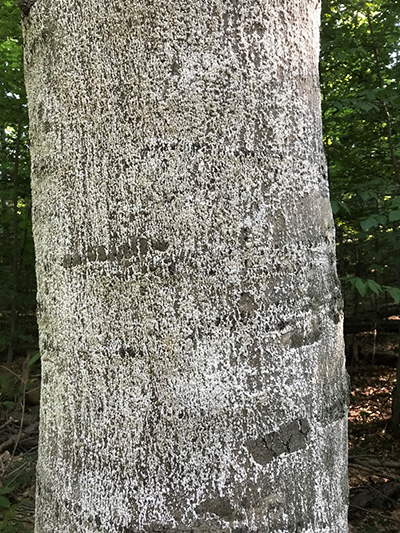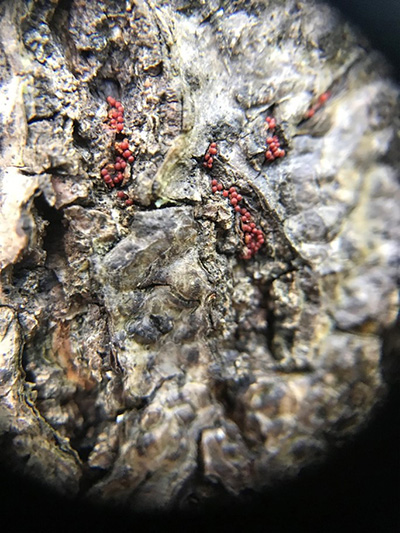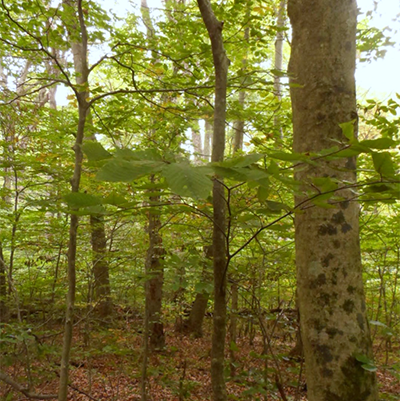What is Beech Bark Disease?
Beech bark disease (BBD) has been slowly spreading through southeastern Canada and the northeastern United States since the late 1800s. It continues to spread southwesterly through the Appalachian Mountains but has not been found in elevations under 1000 feet in Virginia and has not been found in or near Fairfax County.
BBD is a fatal disease complex in American beech (Fagus grandifolia) as well as ornamental beech species (European beech, Fagus sylvatica and others) in North America. It had its beginnings in Nova Scotia, Canada around 1890 with the importation of an ornamental European beech tree. Nobody knew that the tree carried scale insects that would become invasive.
BBD is caused by the workings of two organisms. First, the small, white, fuzzy beech scale (Cryptococcus fagisuga) pierce the beech tree’s bark to feed on its sap. The tiny wounds created by the feeding scale insects become the entry points for the fungus, Neonectria faginata.
Once infested, most beech trees weaken and die over the span of several years to decades. Older, larger trees are more susceptible to BBD than younger trees. Infested trees can be recognized by waxy-white patches on the bark or fuzzy “cotton ball” bumps. Severe infestations of beech scale make the tree look like it has been rolled in powdered sugar. Other symptoms include loss of leaves, dead or broken branches, and discolored, yellowing leaves. The Neonectria fungi are difficult to see, but when present, form clusters of tiny, scarlet red fruiting bodies which may be visible on the bark.
How is Beech Bark Disease Treated?
There are currently no treatments for BBD. Researchers are working to identify resistant trees in areas which are heavily affected by BBD. These BBD resistant trees are then used for breeding trials and clonal reproduction to enhance the survival of the species.


Why is the American beech tree important?

The American beech is a dominant species in the upland hardwood forests of the eastern United States. Beech can be identified by its characteristic smooth, light grey bark. It is a major nut-producing tree, and its nutritious beechnuts provide food for black bear, chipmunks, squirrels, porcupines, white-tailed deer, and a variety of birds, including ruffed grouse. The loss of this food source where BBD is spreading will have a profound effect on wildlife. Beech are also favorite nesting sites for chickadees, and they provide shelter for many other cavity dwellers such as owls and woodpeckers. BBD is being closely monitored in the Shenandoah National Park as it spreads through the Appalachian Mountains.
In Fairfax County, American beech trees make up about 10% of the urban forest and are a common overstory tree in natural areas. While BBD is not expected to become a problem in the county, staff are monitoring beech diseases. Beech leaf disease, unrelated to BBD, is a bigger concern as it is already present in Fairfax County.
What Can I Do to Help?
Residents can help by keeping an eye out for BBD and beech scale when hiking in the woods. If you see a beech tree that looks like it is covered in powdered sugar, give us a call at 703-324-1770 or email a picture to pestmail@fairfaxcounty.gov. To help keep insect pests and diseases from spreading, please do not move firewood.
For more information, see VA DOF Tree and Forest Health Guide (page 82).

